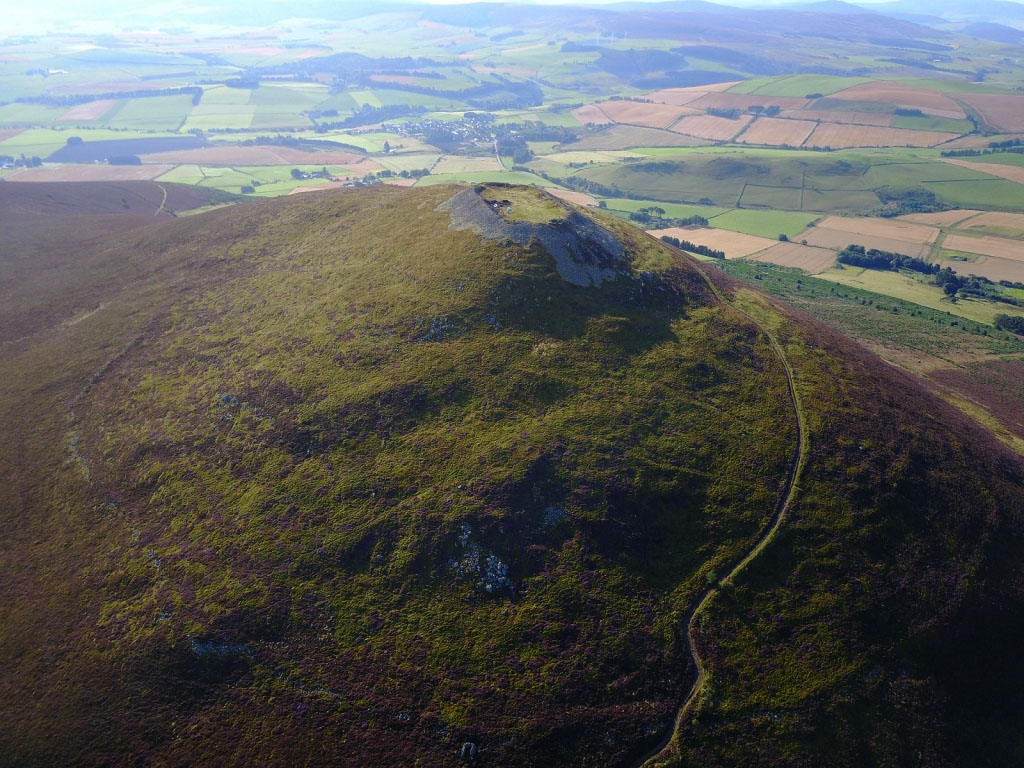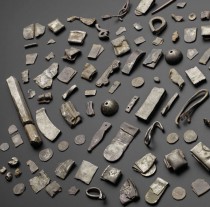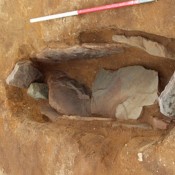A hillfort previously discovered on the summit of Tap O’ Noth in Aberdeen, has been described as one of the largest ancient Pictish settlements ever found in Scotland.
A team of archaeologists from the University of Aberdeen have revealed that the settlement had up to 4000 inhabitants living in over 800 huts. Essentially making the site a city by standards of the day, rivalling in size to post Roman settlements found across Europe.
Using Radiocarbon dating, the results suggests that the settlement was built in the 5th- 6th centuries AD and covered an area of around 17 acres. Professor Gordon Noble, who led the research, described the discovery through carbon dating that activity at the site extended into the Pictish period as the ‘most surprising of his career’.
“I was absolutely stunned when I read the results,” he said. “We took samples from the site really just to begin placing the important discoveries we have made at Rhynie over the last few years in a broader geographical context.
“Because of the sheer scale of the fort and its location clinging to the side of a hill at the edges of the Cairngorms, some scholars had suggested occupation dated from a time when the climate was warmer, possibly during the Bronze age, and our earlier excavations have shown the vitrified fort on the summit of Tap O’ Noth dated to 400-100 BC.”
“Over the last two years we have been investigating the lower fort at Tap O’ Noth which is enclosed by a rampart that encircles the lower slopes of the hill.
“The results of the dating were simply incredible. They show that the huge fort dated to the fifth to sixth centuries AD and that it was occupied at the same time as the elite complex in the valley at Barflat farm. Dating shows that settlement on the hill extended as far back to the third century, but both hut platforms excavated also had fifth to sixth century AD phases.”
The Aberdeen team then conducted drone surveys and utilised laser technology which showed that there are hundreds of hut platforms within the fort – perhaps as many as 800 – making it one of the largest ancient settlements discovered in Scotland.
The distribution of the buildings suggests they are likely to have been built and occupied at a similar time as many are positioned alongside trackways or clustered together in groups. Drone surveys also showed that within these groups was one notably larger hut, indicating that there may have been some form of hierarchical organisation within the fort.
Professor Noble added: “The size of the upper and lower forts together are around 16.75 hectares and one phase at least dates from the fifth to sixth centuries AD.
“This makes it bigger than anything we know from early medieval Britain – the previous biggest known fort in early medieval Scotland is Burghead at around five and a half hectares and in England famous post-Roman sites such as Cadbury Castle is seven hectares and Tintagel around five hectares.
“The Tap O’ Noth discovery shakes the narrative of this whole time period. If each of the huts we identified had four or five people living in them then that means there was a population of upwards of 4,000 people living on the hill.
“That’s verging on urban in scale and in a Pictish context we have nothing else that compares to this. We had previously assumed that you would need to get to around the 12th century in Scotland before settlements started to reach this size. We obviously need to do more to try and date more of the hut platforms given there are hundreds of them, but potentially we have a huge regional settlement with activity emerging in the Late Roman Iron Age and extending to the sixth century.
“It is truly mind blowing and demonstrates just how much we still have to learn about settlement around the time that the early kingdoms of Pictland were being consolidated.”
Permission to excavate and film at Tap O’ Noth was granted by Historic Environment Scotland and supported by Aberdeenshire Council. The fieldwork was funded by the University of Aberdeen Development Trust and Historic Environment Scotland.
Bruce Mann, Archaeologist for Aberdeenshire Council said: “To say these results are completely unexpected is an understatement. However, they could be key to understanding changing settlement patterns at the time. In the early centuries AD there were widespread small communities scattered across the landscape. These then largely disappear during the time of the Roman campaigns and we’ve struggled to understand what happened. Perhaps now we have evidence of people coming together in large concentrations at a handful of places, a reaction to the threat of external invasions.”
Kevin Grant, Archaeology Manager at HES, added: “We have supported the University of Aberdeen and the Northern Picts Project though our Archaeology Programme grants for a number of years, and it continues to produce fascinating results. The findings at Tap O’ Noth represent a discovery of international significance, suggesting the site may have been far larger than any previously known in Britain in the period. Discoveries like this show how a focused and considered approach to scientific dating can produce high quality results which is why we continue to work with our partners and SUERC to support archaeological science’
Cllr Jim Gifford, Leader of Aberdeenshire Council, said: “This find of historic importance will be of huge significance. Aberdeenshire is an already popular tourist destination due to its picturesque mountains and coastline as well as its rich history and cultural traditions.“Like everywhere, our communities and businesses have suffered financial hardship due to the Coronavirus (Covid-19) pandemic so I am hopeful that once restrictions start to be lifted, and of course when it is safe to do so, visitors from far and wide will flock to Aberdeenshire to explore this find and act as a welcome boost to the local economy.”





